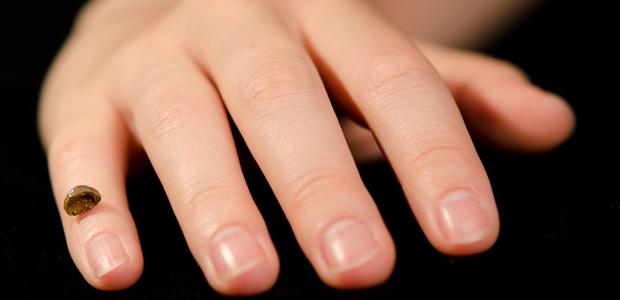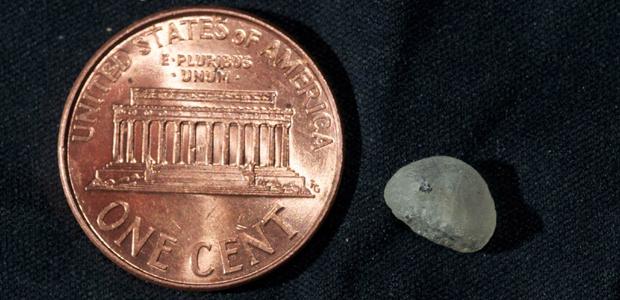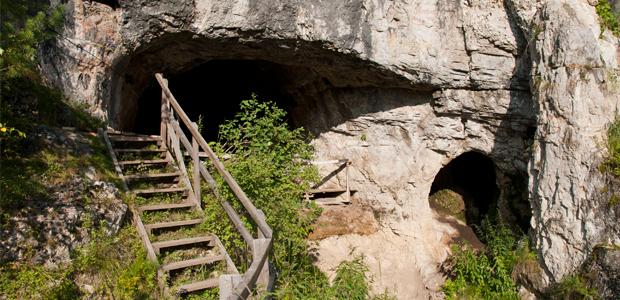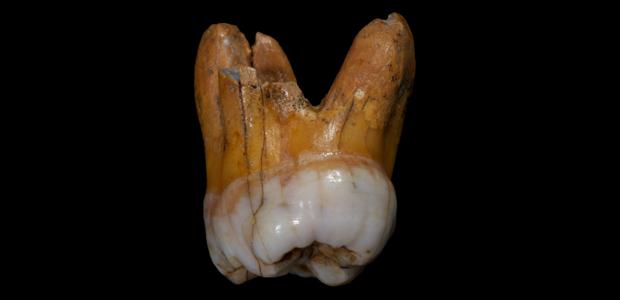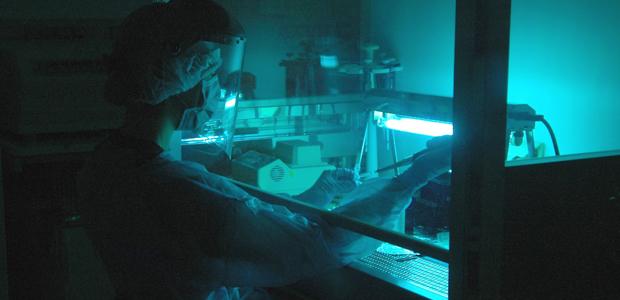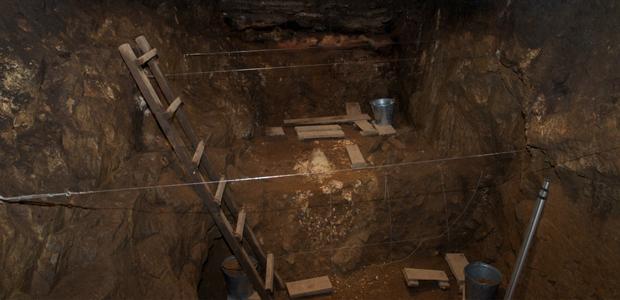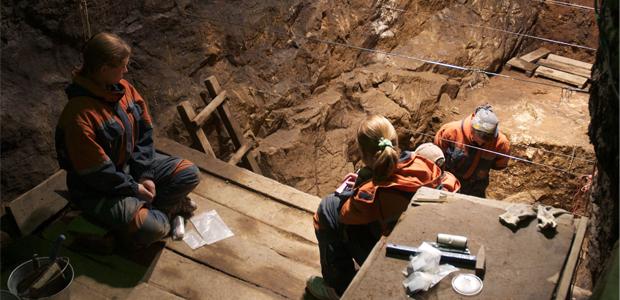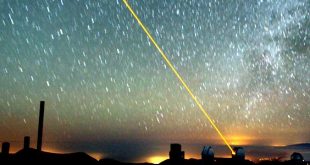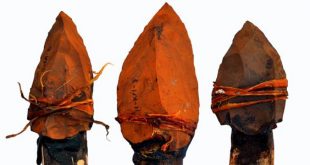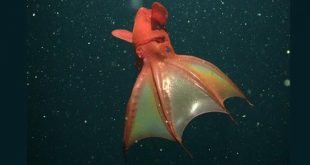From a tiny bit of finger bone, an international team of researchers extracted DNA and thoroughly sequenced the genome of our other human-like relatives, the Denisovans.
Almost nothing is known about the Denisovans – our other extinct, human-like relatives. They’re described in the fossil record solely, by a chunk of finger bone and two, unique molars that were unearthed in a Siberian cave.
But, from a tiny bit of that finger bone, an international team of researchers extracted DNA and sequenced it, revealing the portrait of a young girl, with dark skin, brown hair and brown eyes.
Traces of the Denisovan DNA – as much as six per cent – has also been found in humans living in Papua New Guinea today, meaning our human-like cousins had a foot-hold beyond the cave responsible for preserving their DNA.
It also means that like modern humans did with Neandertals – our other, human-like relatives – we had sex with them before they went extinct.
“The Denisovans must have been present throughout Asia because we find patterns of [their] ancestry on islands in southeast Asia,” Matthias Meyer, study co-author and postdoc at the Max Planck Institute for Evolutionary Anthropology in Germany, told Science-Fare.com. “When modern humans left Africa and started colonizing Europe and Asia, at some point, they interacted with Denisovans before they moved on to settle the islands.”
To be fair, the first time researchers sequenced the Denisovan genome was in 2010. It was low quality –every position in the DNA sequence was known once and at most, twice – because DNA degrades through time and becomes particularly fragile, making it difficult to work with using current methods.
So, Meyer developed a new method – a really nifty and simple innovation on the older one, really – that exploits the fact that ancient DNA’s fragile.
As a result, the researchers were able to sequence the archaic human’s genome as much as 30 times more thoroughly than before – a quality that rivals modern samples.
“We can now actually determine a complete catalog of changes where living modern humans differ from their archaic, extinct relatives,” Meyer said. “We really know every position in the genome that changed after our split from the Denisovans.”
When compared to humans, researchers found Denisovans differ by only a little more than 100-thousand changes in there DNA – which is minute considering the entire sequence of A’s, T’s, C’s and G’s exceeds three billion.
Much smaller, is the preliminary number of those changes that affect protein function – the tools our cells use to carry out tasks. The researchers identified just 260 changes and when they looked at the 23 most conserved in humans, approximately a third of them were associated with how our brain’s wired and works.
They even found a gene – known as EVC2 – that might explain why the Denisovan teeth have a unique shape compared to Neandertals and modern humans.
“Variants of this gene are known to change the morphology of the tooth,” Meyer said. “Interestingly, in a way that makes a human tooth, in some aspects, look like a Neandertal one.”
The researchers say the Denisovans join only modern humans in having 23 pairs of chromosomes – although Neandertals will surely join the club soon too – instead of 24, like the rest of the great apes who populate our hominid family.
“During human evolution two of the chromosomes fused into one which now makes human chromosome two,” Meyer said. “In chimpanzees, you find two chromosomes that are equivalent to chromosome two.”
Having a complete karyotype, researchers could also glimpse into the Denisovan family tree and look at how related the girl’s parents were – what they call her heterozygosity.
“We’re able to distinguish the two chromosomal copies that this Denisovan individual inherited from her mother and father,” Meyer said. “In essence we have two Denisovan genomes – and we can compare the two.”
Compared to modern humans, they had very low genetic diversity – researchers say the girl wasn’t inbred though. In fact, modern humans were as much as five times more genetically diverse than Denisovans.
“Every human from one generation to the next, passes on some differences in their genome,” Meyer said. “Over time, you have a constant accumulation of those differences.”
When researchers looked deeper into the Denisovan family tree, they found our human-like relatives might have only grown large enough to leave a hint of their existence in the genomes of the modern populations found in southeast Asia.
“Throughout the last few hundred thousand years, Denisovans showed a very low population size before their extinction,” Meyer said. “One could even speculate that Denisovans were, perhaps, struggling against extinction for quite a while.”
Dating the fossils though, has been a challenge for researchers. They’re usually dated directly, using radiocarbon dating, but the Denisovan sample’s too small to do that.
To make matters even more complicated, the layers of soil around the fossils were in about the same condition, so researchers couldn’t directly date them either – which is the reason the fossils are currently estimated to be between 30,000 and 50,000 years old.
“It’s really impossible from Archaeology to determine an accurate date,” Meyer said. “One thing we can do now that we have this high quality genome is try to quantify the missing evolution in [it].”
Exploiting the fact that the rate of mutations is very small and consistent through the generations, researchers can count the number since modern humans today split from our nearest relative, the chimp – who we share 96 per cent of our DNA with!
“When we compare all modern human genome sequences to chimpanzee ones, we can quantify the number of differences between them,” Meyer said. “If we do the same with Denisovans, we can determine the number of differences between the Denosivans and chimpanzees.”
Essentially, they count the mutations back from modern humans and count them forward from chimps – since Denisovans fall somewhere in between the two – and come up with a slightly older, but narrower, age between 74,000 and 82,000 years old.
Given the less than ideal conditions, Meyer says this isn’t in total disagreement with the radiocarbon dates and says this number will change as researchers expand the data set they used to estimate it.
Since researchers have estimated that modern humans split from chimps approximately 6.5 million years ago, the team estimates that Denisovans split from modern humans approximately 800,000 years ago.
From that, they find Denisovans split from today’s philandering humans, between 170,000 and 700,000 years ago – some African populations don’t appear to have interbred with either of our human-like relatives, so they represent a pure, archaic population.
This is, in part, because they appear to be more closely related to Neandertals and their genome hasn’t been sequenced to as high quality. It also accounts for the evolving information researchers are getting about measuring mutation rates through generations – Meyer says we pass on between 20 and 50 mutations to our children.
“We still need to fine tune this method a bit,” Meyer said. “This molecular dating method is heavily affected by even the smallest difference in genome quality.”
This is ironic since the technique Meyer developed exploits the fragility of ancient DNA in order to achieve the high quality sequence needed to start approximating a fossil’s age.
Part of copying DNA in the lab involves using heat to break the two strands apart. The researchers also need to add small bits of artificial DNA to the ends of the ancient sample.
They act to prime the tools researchers use to copy the DNA – in the same sense that you prime your lawnmower – giving them something to recognize, grip onto, and make an exact copy from the ancient sample. The researchers repeat this process several times to increase the sample quantity.
Usually, the artificial DNA’s added to the sample before it’s heated for the first time – once the temperature comes down, the DNA happily joins back up with its matching half.
Because Ancient DNA’s fragile, once it’s heated, it doesn’t just break into two strands, it fragments into short bits.
“This methodology of attaching artificial DNA ends to the molecules is a process that requires several enzymatic steps,” Meyer said. “Each step has some chance of failure and if you lose a double stranded molecule, you’ve lost this molecule entirely.”
So, the researchers heated the ancient DNA first and then added the artificial DNA.
“The protocol we’ve developed will split the double helix in as many independent fragments as there are and then recover information from each,” Meyer said. This is how researchers know each site so thoroughly.
“If there are any gaps, the molecule’s already fallen apart,” Meyer said. “So, we know there must be one readable molecule between the two adaptor pieces.”
Since the researchers know the artificial DNA’s sequence, it can be accounted for and the researchers can reassemble all the ancient DNA fragments like a puzzle – thanks also to impressive computer technology that can analyze the sheer amount of data they recovered!
The complete study was published in the journal, Science.
 Science Fare Media Science News – Upgraded
Science Fare Media Science News – Upgraded
